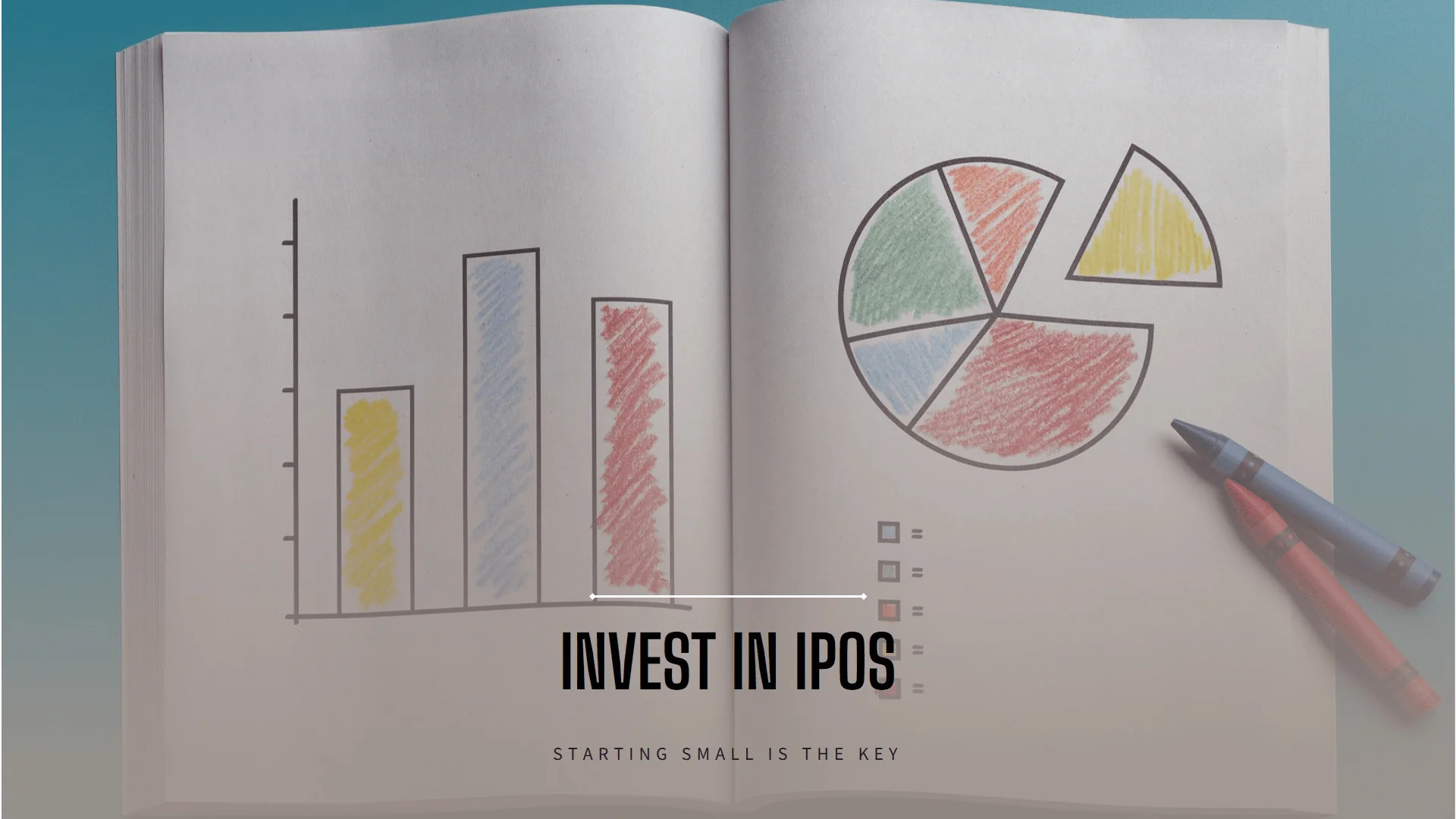Introduction
Is it Possible to Make Big Money in the Indian Stock Market – IPOs are a great chance for investors to buy shares of a particular company when it goes public. The majority of people interested in IPOs can buy stocks in a company at the initial stage and such stock can become more valuable as the business develops. But here, as we prepare to discuss IPO investments, it is pertinent to know how much is required to begin. In this article, the author discusses the minimum amount needed for an IPO in India and other important issues for investors.
Table of Contents
Understanding IPOs in India
An IPO refers to a situation where a company with limited shareholders’ equity decides to sell some of its stocks to the public for the first time. Businesses opt to go public with a view of floating shares in the market to expand their business, clear debts, or as a measure towards meeting market standards. This way the investors can directly buy the stocks of the company when it goes for an IPO and thus own it.
Thus for the individual investors in India, the IPOs have provided an interesting gateway to invest. However, the process includes the understanding of some fundamental factors most importantly the minimum amount to be invested to participate in the process.
IPO Investment Categories
Investors in IPOs are classified into three categories: Investors in IPOs are classified into three categories:
- Retail Individual Investors (RIIs): These are the common investors who invest a relatively lower amount than institutional investors, mostly, less than ₹ 2 lakhs on an IPO.
- Non-Institutional Investors (NIIs): These investors normally seek investments of more than ₹ 2 lakhs The applicants should be more than 18 years old and should produce a PAN number and proof of income.
- Qualified Institutional Buyers (QIBs): These are the bigger players in the financial markets such as mutual and insurance firms which invest in humongous amounts.
Retail individual investors represent most of the small investors; therefore, this article will mainly concentrate on retail investors as well as the prerequisites that define the minimum investment ratio for them.
Minimum Lot Quantity in IPOs
The amount of money that has to be invested in an IPO is defined by the size of the lots, the smallest quantity of shares an investor can buy. The amount of IPO lots is determined by the SEBI rules that regulate shares and IPO, where companies can determine the lot size in cooperation with the IPO price and the minimum amount of investments that can be made by a retail investor.
According to SEBI regulation, the minimum investment allowed for retail investors should be between ₹10,000/- to ₹15,000/-. This means that companies set the lot size in such a manner that the total value of one lot lies in this range. For instance, where the share price of a particular company is ₹500, the lot size can be 30 shares (that is 30 x ₹500 = ₹, 15,000).
Example of Lot Sizes
Let’s look at a practical example:
Company A: Thus, if the IPO share price of Company A is ₹ 100 and the minimum lot size is 100 shares, then on minimum, one would have to spend ₹ 10000 (quantity of 100 shares) on the company’s IPO.
Company B: For instance, if the current price of Company B’s share is ₹750 and the minimum quantity of shares to enter into the lot is 20 shares then the minimum investment possible in Company B’s share is ₹15,000 (20 shares x ₹750).
In both cases, the minimum investment fits the SEBI’s regulating standard of ₹10,000-₹15,000 for retail investors.
By implementing the same approach of evaluating lots, it would be possible to realize why lot sizes differ:
The size of lots in IPOs can sometimes be standardized and can depend on the company’s share price and sometimes, its discretion. For instance, a stock with a very high price per share will most probably reek a smaller lot, as compared to a low-price stock. It is to make sure that the minimum investment quantity is kept in the regulatory guidelines of SEBI as well.
When it comes to the IPO lots and prices retail investors have to know how much money they will have to invest to participate in an IPO. Sometimes, one may wish to apply for several lots which is more money that he may not afford at once.
Factors Influencing Minimum Investment
Several factors influence the minimum investment in an IPO: Several factors influence the minimum investment in an IPO:
- Share Price: The first one is the price per share which may be as low as ₹ 100 or as high as ₹ 1000 or more.
- Market Sentiment: It is a fact that when there is a high demand for IPOs, existing companies can opt to set their prices higher, therefore requiring a much higher minimum investment.
- Company Valuation: Technology or pharmaceutical industries or companies of high growth or large capitalization may fix a higher IPO price.
Regulatory Guidelines: SEBI regulations preserve the interests of shareholders to control the company’s price, while at the same time protecting the small investor from being locked out from investing in IPOs.
IPO – How to open an IPO account in India?
When you know the minimum amount of money you need to be able to invest for an IPO, the next thing to know is how to apply. Luckily, the process is easy; one can do it online or offline by following these steps.
Online Application (ASBA Process): The IPO application process which is mandatory is Application Supported by Blocked Amount (ASBA) The ASBA process is very simple to use for applying IPO. This method helps the bank freeze the required amount for IPO from your account till the shares are allotted. Here’s how you can apply: Here’s how you can apply:
- First Step: Open the Internet banking site of your bank.
- Step 2: Go to the IPO section under investments options and choose the required IPO you want to apply.
- Step 3: Input the number of lots that you desire to apply for and the UPI ID or DP (Demat Participant) detail.
- Step 4: Apply, and the required amount will be blocked in the applicant’s account. The above amount will only be debited, if the shares are allotted to your end.
Offline Application: Shareholders can also apply physically by applying to their stockbroker or by filling out a physical application form. Almost all brokers provide IPO application services application, and you can do it by simply filling out a form. However, this ASBA process is used to prevent the funds from being blocked.
UPI-Based Application: In terms of IPO Application, SEBI has made a provision to use UPI since the year 2019. Through the UPI ID, the investors can directly apply in IPOs without a broker, or through online banking apps. It has been much easier, faster, and more convenient for retail investors who do not have to through the rigor of analysis.
The six important factors that need to be considered before investing in an IPO of a company are as follows
However, before investing in an IPO, several factors should be put into consideration when IPO investing is attractive. Below are some key points to consider: Below are some key points to consider:
- Company Fundamentals: One must always grasp the financial wealth, the capability to expand, and the position in the industry. Ensure that you go through the DRHP document which gives the financial details, risks, and the objective of the IPO for the company.
- Market Sentiment: The ability to secure an IPO therefore depends on the conditions of the market. Good performance in stock markets and good confidence among investors are always favorable to the初始化companies going for IPOs. On the other hand, in bearish markets, HSL is more appropriate in sectors, which are less sensitive to sudden drops in share prices.
- Valuation: As seen in the above-discussed firms IPO valuation often happens to be inflated due to the hype in the market. Evaluate the stock’s valuation and decide whether it corresponds to the average value of companies operating in the same industry. The IPOs are usually overvalued, which means that once the stock is floated in the exchange, the stock has a low chance of performing well.
- Lock-In Periods: Lock-in provisions are usually incorporated in IPOs especially for the promoters or pre-IPO shareholders to hold their share for a certain period. There is likely to be volatility in the share price when unlocked since shareholders who had a large percentage of their shares locked in can explain the fluctuation.
Risk of Undersubscription: An IPO may not be under-subscribed fully at some other times particularly where market conditions are unfavorable. In such circumstances, so-called ‘long-only’ institutions might get a full allocation, but the listed stock could be a ‘loser’.
Should You Invest in IPOs?
For that reason, it is prudent to check how IPOs can fit your Needs & Risk Tolerance checklist before you commit your cash. It is yet possible to earn good money from IPO investments although they are associated with certain risks. Here are a few factors to determine if IPO investment is suitable for you: Here are a few factors to determine if IPO investment is suitable for you:
- Risk Tolerance: One of the distinct features of IPOs is a high level of price variability during and after the offerings, which means that once floated into the market, the price of the stock can rapidly change. They may apply to individuals who have higher risk tolerance and are ready to invest in short-term fluctuations of IPOs.
- Long-Term or Short-Term Goals: Some investors look forward to the IPOs with the hope of making quick bucks by selling the listed stocks at a higher price than the issue price. However, to appeal to long-term investors, it is important to analyze how this company will develop over some time. If your objective is merely to hit the high money in the short time period then think about the market demand for the IPO. That is why in case an investor is for the long term, then he should look at the fundamentals of that company.
- Portfolio Diversification: Including IPOs in your investment might also be of advantage because they also act as diversification if you are venturing into a new sector or industry. IPOs should not be invested heavily because they are unpredictable thus the following should not represent more than 25% of the total portfolio.
Conclusion
The process of investing in an IPO in India is quite an exciting one since it allows one to own a piece of the journey a certain company is likely to take, especially in the future. The minimum requirement investment from a retail investor has been commonly observed to be ₹10,000 to ₹15,000 through a lot size and share price. For applying for an IPO, retail investors can use the ASBA process via net banking, stock brokers, or UPI.
As with any investment, it is important to do due diligence on the company, investors must understand the risks involved and know if this investment is right for them. Although IPOs can host immense returns, the level of risk that is often tied to them can also be very high, and therefore, the best thing that an investor can do is to engage in the right IPOs that are out in the market and not just be swayed by the glamour that is associated with IPOs.
Through comprehending the minimum amount needed for IPO investments, one should take into consideration factors such as a company’s performance, the general market conditions, and the individual owning risk tolerance level hence be prepared to profit from the IPO investment.




